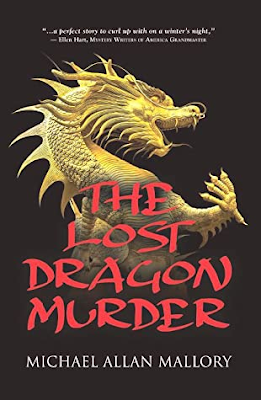The Tiny Spark That Ignited Fires of Edo
Inspiration is like fire: it often starts with a tiny,
random spark, which smolders quietly for a while before bursting into flame.
That’s definitely true of my newest Hiro Hattori mystery, Fires of Edo, which owes its initial,
early inspiration to a humble artifact I saw in a small museum, several years
before I set the first words on the page.
In November 2016, while hiking part of an ancient travel
road through Japan’s mountainous Kiso Valley as research for an entirely
different book, I spent two nights in the preserved, historical post town of
Magome, in Gifu Prefecture. The town consists of a single, steeply-sloping
street that winds up the side of a mountain; traditional inns (called ryokan) and shops line both sides of the
narrow, stone-paved road. In its heyday, Magome was one of the major stopping
points on the Kiso-kaido, later known
as the Nakasendo, a mountainous route that connected the ancient capital of
Kyoto with the growing city of Edo—now called Tokyo.
The special inn where high-ranking samurai once spent the
night in Magome is now a small museum filled with artifacts that relate to the
history of the town and the Kiso Road. Most of the displays relate to domestic
life or business: a woman’s cosmetic case, a portable scale, and an early clock
that used burning incense to mark the passing hours.
Tucked away in a corner, a small, glass case held a display
dedicated to the victims of one of Magome’s many fires; near the front, a
simple, wooden device was labeled “龍吐水”
(Dragon Spout) and “Water Pump” in English and Japanese. Bilingual text on the
display identified the object as an Edo Period (1603-1868) fire extinguisher, a
surprising and much-welcome technological advancement over the water buckets
Japanese people had used to fight fires for centuries before.
As a long-time student of Japanese history, architecture,
and culture, I was well aware of the devastating impact fire on Japan. In fact,
if you visit (or read about) almost any major historical or religious site in
Japan, you’re likely to see a reference to it burning down or being rebuilt
after being destroyed by fire. However, this fire extinguisher, and
particularly the text—which said nothing about how it was used, but instead
discussed the surprise and joy with which it was received—started me thinking about
the impact of fire, and firefighting, on the lives of ordinary Japanese people
in the past. After all, it wasn’t only historical sites that burned; the fires
that swept through Edo and other towns impacted common people too.
Three years later, when I finally began outlining the book
in which my ninja detective, Hiro Hattori, and his Portuguese Jesuit sidekick
Father Mateo, arrived in Edo, that fire extinguisher instantly sprang to mind.
Books played an important role in Edo’s history, and I knew
I wanted to set the story in the world of the men and women who made and sold
books in Edo—which was then little more than a fishing town ruled by samurai. Normally,
once I decide the cultural setting in which a book takes place, I spend a
little time considering how a murder might take place there. With this book,
for the first time ever, I already knew.
It was time for the spark ignited by the simple fire
extinguisher in Magome to become a flame.
The story, which involves a suspicious murder-by-arson in a
book binder’s shop, also features the fledgling fire brigade (sadly, still
working sans extinguishers) who tried
to keep the city safe from its many fires, which were so common that residents
called them “the blossoms of Edo.” In fact, Blossoms
of Edo was the original working title, which eventually changed to Fires of Edo—although I did manage to sneak
the original saying into the story. Keep an eye out for it when you read the
book!
Susan Spann
スザン スパン
Author of CLIMB (2020)
& the Hiro Hattori (Shinobi) Mysteries
Magome at Sunset
Susan Spann is the award-winning, bestselling author of FIRES OF EDO
and seven other books in the Hiro Hattori mystery series, as well as CLIMB:
Leaving Save and Finding Strength on 100 Summits in Japan. She lives and writes in Tokyo, and is
always looking for her next adventure; she shares stories and photographs from
Japan at www.susanspann.com and
on Facebook at /SusanSpannAuthor.



















